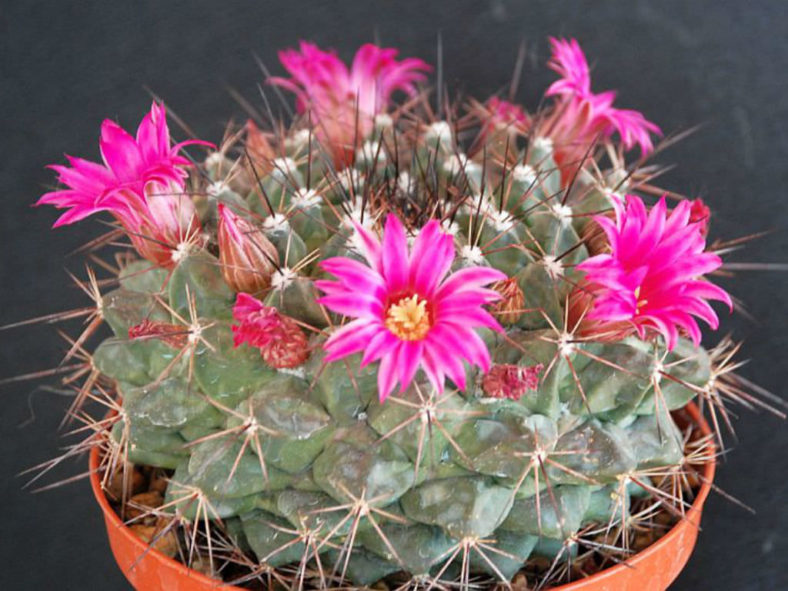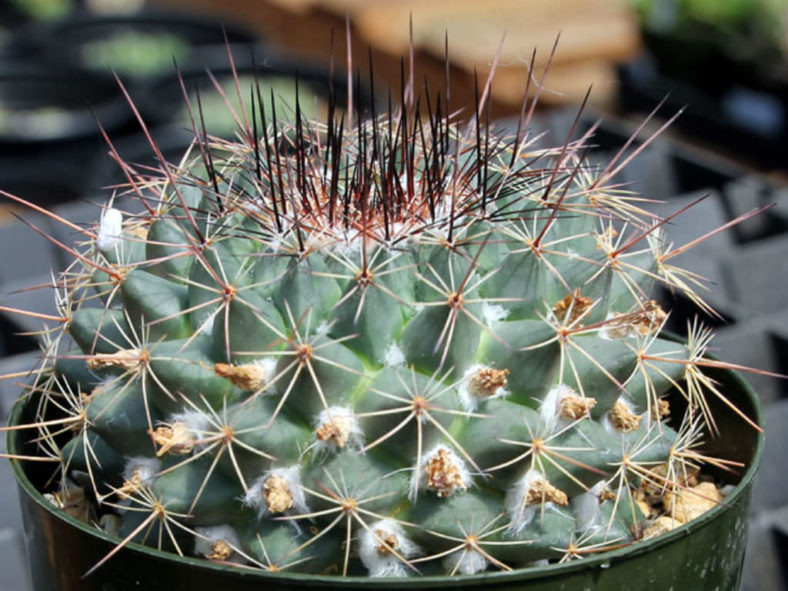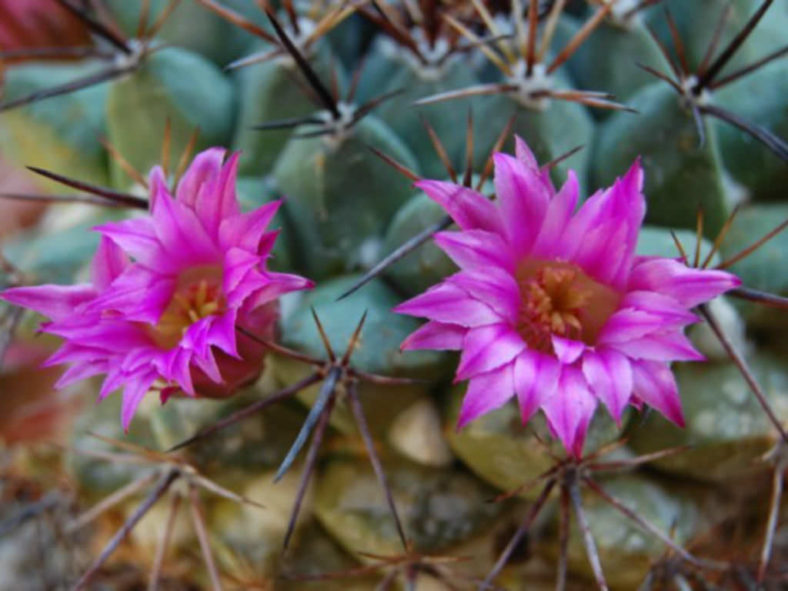Scientific Name
Mammillaria melanocentra Poselger
Synonym(s)
Mammillaria melanocentra subsp. melanocentra, Mammillaria melanocentra var. typica, Neomammillaria melanocentra
Scientific Classification
Family: Cactaceae
Subfamily: Cactoideae
Tribe: Cacteae
Subtribe: Cactinae
Genus: Mammillaria
Etymology
The specific epithet "melanocentra" (pronounced "mel-an-oh-KEN-tra") means "black-spined" and refers to the spines of this species, particularly the central spines that emerge black.
Origin
Mammillaria melanocentra is native to northern Mexico (Coahuila, Durango, and Nuevo Leon). It occurs in rock cracks and stony outcrops at elevations between 1,150 and 5,900 feet (350 and 1,800 m).
Description
Mammillaria melanocentra is a small cactus with a glaucous green, usually solitary stem covered with pyramidal tubercles and clusters of needle-like spines radiating from an areole at the tip of each tubercle. The stem is spherical to short cylindrical, has a slightly depressed apex, and can grow up to 6.4 inches (16 cm) tall and 6 inches (15 cm) in diameter. In the new growth, the stem is green with large, angled tubercles and woolly axils. Each areole typically bears one central spine, although occasionally there may be up to three, along with 6 to 9 radial spines. The radial spines can be white, brownish, or black, while the central spines emerge black but age to gray with a black tip.
The pink flowers can reach a length of 0.8 inches (2 cm) and nearly equal diameter. They usually appear in a ring in the upper third of the stem during the spring. The fruits are pink to red, club-shaped, and contain tiny, brown seeds. They can grow up to 1.2 inches (3 cm) long.

Hardiness
USDA hardiness zones 9b to 11b: from 25°F (-3.9°C) to 50°F (10°C).
How to Grow and Care
To encourage better flowering, allow the plants to enjoy a cooling period in the winter and suspend watering. Unlike many other cacti, which use their ribs as storage devices, the Mammillaria feature raised tubercles, from which spines emerge. When you water, the tubercles expand to allow for increased water storage. The flowers appear from these tubercles' axils on the previous year's growth, which accounts for their interesting halo effect. The cactus mustn't be exposed to prolonged dampness and standing water. Never let your cactus sit in a dish of water. Lastly, ensure that fertilizer is applied during the growing season for the best results.
Repot as needed, preferably during the warm season. To repot a cactus, ensure the soil is dry before repotting, then gently remove the pot. Next, remove the old soil from the roots, removing any rotted or dead roots.
See more at How to Grow and Care for Mammillaria.
Links
- Back to genus Mammillaria
- Succupedia: Browse succulents by Scientific Name, Common Name, Genus, Family, USDA Hardiness Zone, Origin, or cacti by Genus
Photo Gallery
Click on a photo to see a larger version.

